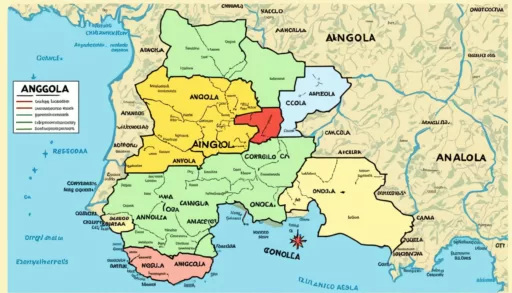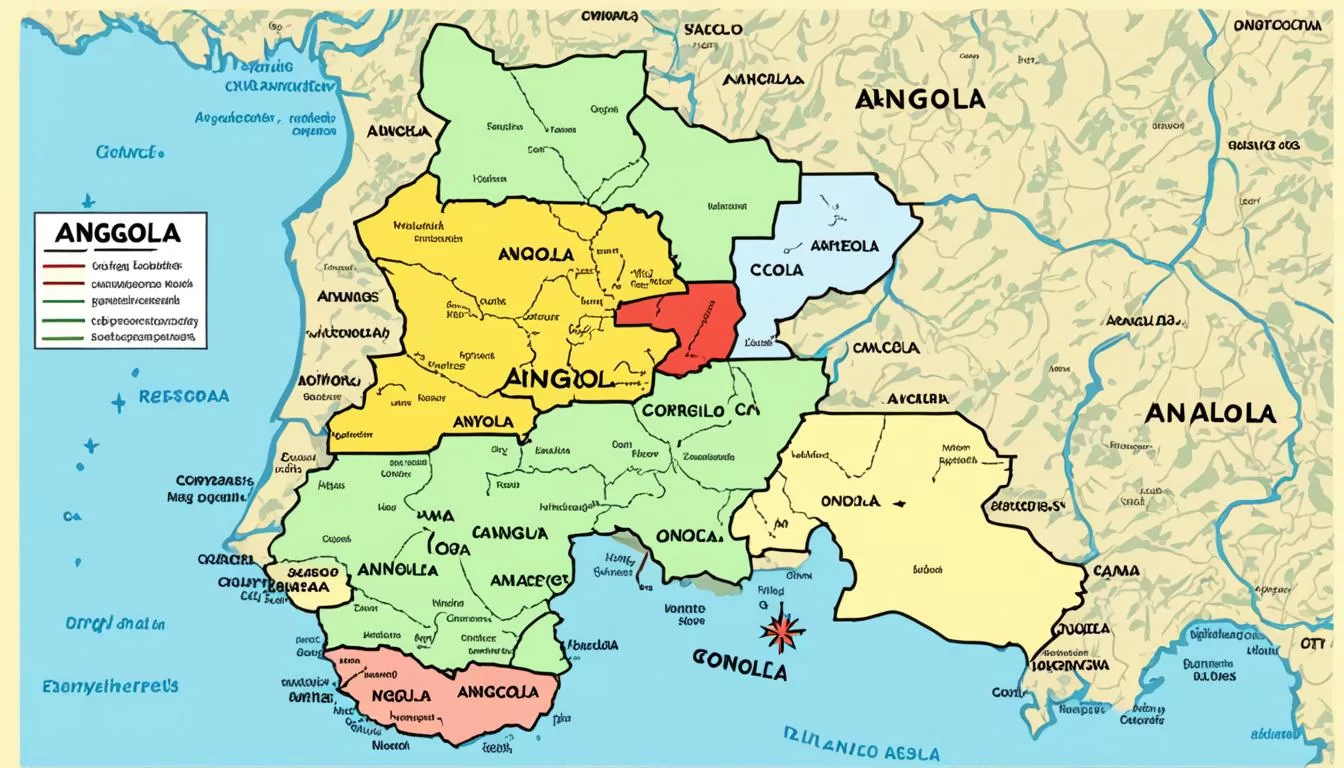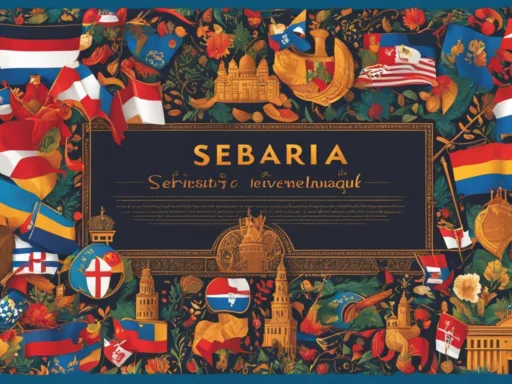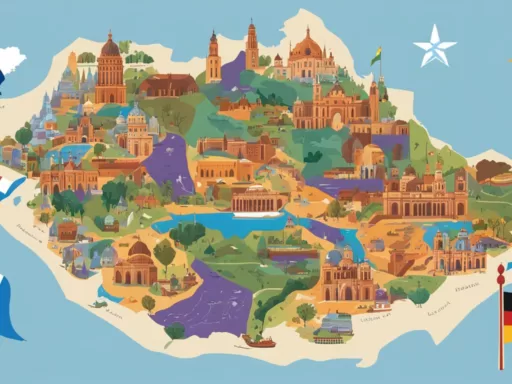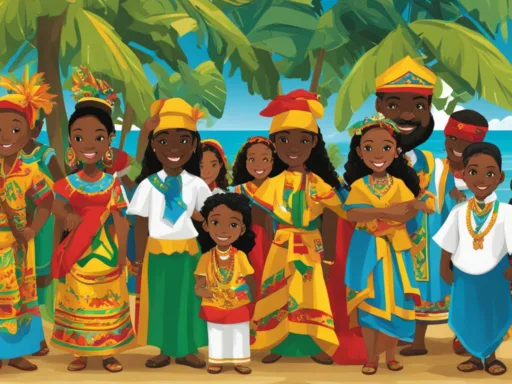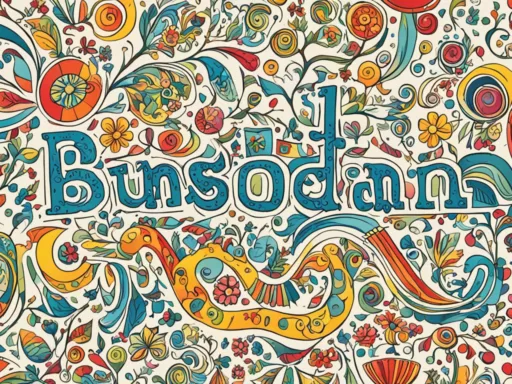Angola, a vibrant cultural tapestry on the southwest coast of Africa, boasts a rich linguistic landscape that is as diverse as it is dynamic. With the unmistakable presence of Portuguese in Angola as the official language, the nation is a true linguistic hub. However, beyond the streets of bustling Luanda and the corridors of academia where Portuguese reigns supreme, a myriad of Angolan dialects echo through the savannahs and highlands, from the lips of various ethnic groups, each with its own unique linguistic footprint.
Travelers and locals alike navigate a communicative maze where the languages spoken in Angola stretch from the historic Umbundu and Kimbundu to the melodic Kikongo. These tongues carry the stories, traditions, and identity of the Angolan people. This intricate web of languages not only serves as a bridge connecting Angola’s storied past with its rapidly evolving present but also stands as a testament to the country’s resilience and rich cultural heritage.
Key Takeaways
- Portuguese is the official and most widely spoken language in Angola.
- Angola is home to a plethora of languages, with 46 indigenous tongues recognized nationally.
- Urban areas in Angola see a higher prevalence of Portuguese usage compared to rural settings.
- Angolan dialects reflect the country’s ethnic diversity and cultural richness.
- Umbundu, Kimbundu, and Kikongo are among the most prominent indigenous languages.
- English and French are emerging as influential foreign languages within Angola’s borders.
Understanding the Linguistic Landscape of Angola
To delve into the linguistic landscape of Angola is to understand the myriad voices that define this rich African nation. Here, the official languages of Angola merge with a breathtaking spectrum of local dialects, crafting a mosaic of cultural expression. Portuguese, the binding thread of this linguistic tapestry, maintains its status as the official narrative voice of the country, a legacy of Angola’s historical avenues.
Portuguese as the Official Language
Angolan Portuguese, a variant similar to that spoken in Mozambique, has been embraced by the nation as its primary means of communication in official domains, including education and media. Tracing its roots back to mid-20th century colonial times, Portuguese’s role in Angola has vastly transcended mere communication; it served as a unifying force, bridging ethnic diversities and surviving as the linguistic consequence of Angola’s complex sociopolitical journey. Today, a substantial number of Angolans speak it natively, influenced by past policies and societal shifts.
Language Diversity in Urban vs. Rural Areas
In Angola’s bustling urban centers, the ubiquity of Portuguese in Angola is undeniable, with its practicality and legacy from Civil War migrations prompting 85% of city dwellers to adopt it as their domestic tongue. The same cannot be said for the rural expanses, where language diversity in Angola remains more pronounced. Indigenous African languages spoken in Angola flourish amongst rural communities, preserving a lexicon of diversification, where only 49% speak Portuguese at home. This stark contrast underscores the unique urban-rural linguistic dynamics prevalent within the nation.
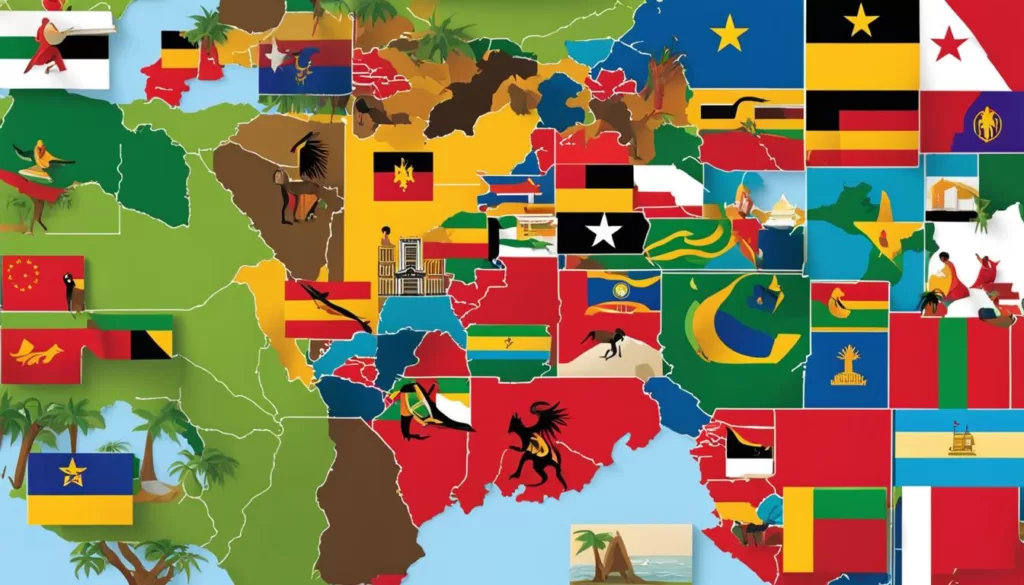
The layers of Angola’s language palette are vast and varied, offering insights into the cultural and social fabric of the country. As we navigate further into this landscape, the profound significance of these languages in capturing and perpetuating Angola’s collective identity becomes ever more apparent.
Languages Spoken Angola: A Closer Look at Indigenous Speech
Angola’s vast multilingual tapestry weaves together an intricate network of Bantu languages and tribal dialects, each lending voice to the nation’s profound and storied diversity. From urban centers to rural villages, these indigenous languages of Angola serve not just as modes of everyday communication, but also as custodians of rich cultural legacies.
The Prominence of Bantu Languages
The roots of Bantu languages in Angola run deep, forming the linguistic backbone of the country’s national identity. With official recognition, languages such as Umbundu, Kimbundu, and Kikongo have flourished, underpinning much of Angola’s oral and written literature. This acknowledgment has propelled the development of educational resources, allowing these languages to prosper in the hearts of their speakers and the ethos of the nation.
In homage to the importance of these languages, consider the following data, showcasing the regions where they’re predominantly spoken and their respective speaker populations:
| Language | Region | Estimated Speaker Population |
|---|---|---|
| Umbundu | Central and Southern Angola | Approximately 6 million |
| Kimbundu | Luanda and Adjacent Provinces | Approximately 4 million |
| Kikongo | Northwestern Angola (including Cabinda) | Approximately 2 million |
The Cultural Significance of Angolan Dialects and Tribal Tongues
Each of the tribal languages in Angola encapsulates not only a means to convey basic information but also embodies the intimate histories, philosophies, and relationships of the people who speak them. The cultural significance of these Angolan dialects cannot be overstated, for they are the narrative threads that weave together the country’s shared history and individual ethnic identities.
Angolan tribal languages are far more than a mere footnote in the country’s linguistic legacy; they are vibrant, living relics of the past, guiding lights for the present, and seeds of wisdom for the future.
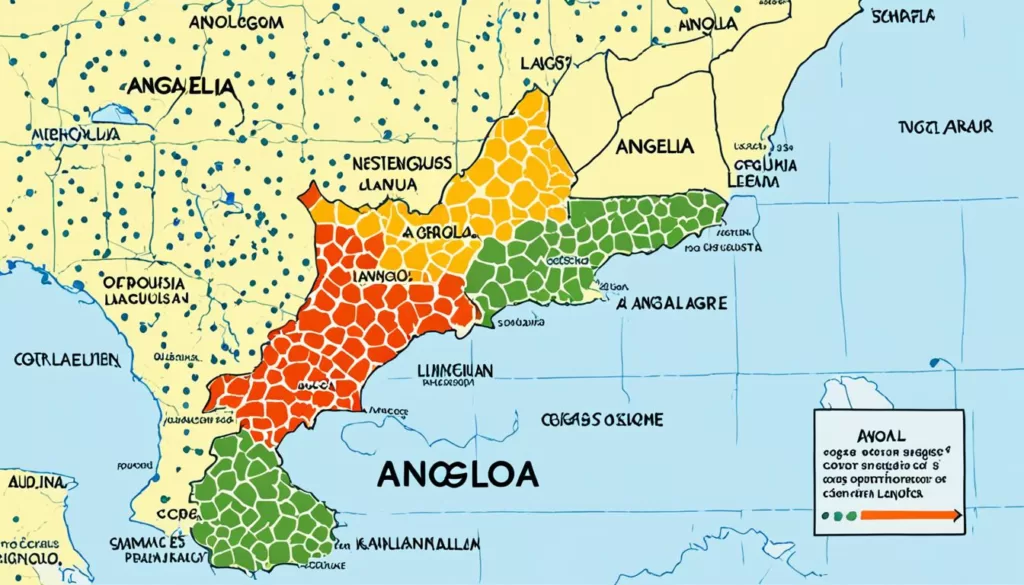
The vitality of these languages is evident in the everyday life of Angolans, from traditional storytelling sessions beneath ancient baobab trees to the chatter in marketplaces where commerce and culture collide in a symphony of dialects. It is a linguistic diversity that tells the story of a nation that is as varied as the landscapes it spans—testament to a spirit of endurance and evolution.
As we continue to explore the linguistic vistas of Angola, it becomes increasingly clear that the Bantu languages and tribal dialects hold the key not merely to communication but to the heart of what it means to be Angolan.
The Influence of Portuguese in Angola
The prominence of Portuguese in Angola is a testament to the enduring impact of historical currents that have shaped the nation. As the solitary official language, Angolan Portuguese permeates the fabric of Angolan society—its government proceedings, educational frameworks, and media broadcasts are all conducted in this lingua franca. This dominant position has cemented Portuguese as an indispensable part of national cohesion and identity.
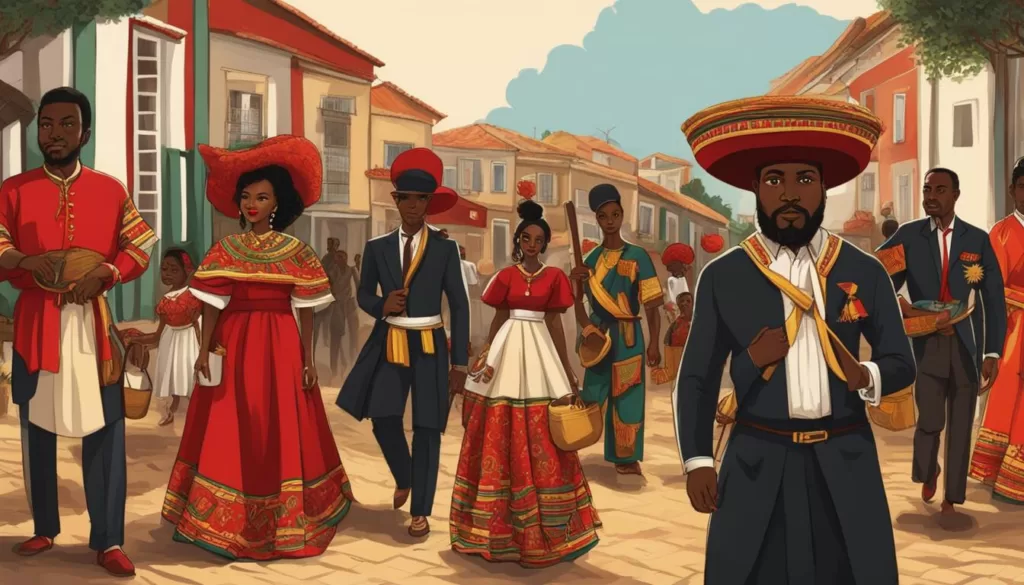
Tracing its pervasive influence back to colonial times, Portuguese facilitated communication across Angola’s diverse ethnic landscapes, tying different groups together under a unified banner of language. From coastal urban metropolises to inland communities, Portuguese became more than just a means to an end but rather a cornerstone of cultural integration and unity.
In contemporary Angola, the echoes of colonial administration continue, with Portuguese influencing generational language preference and serving as a vehicle for upward mobility and access to global platforms. It is a language that has not only witnessed language diversity in Angola but has also been an active participant in molding it.
Through education, young Angolans are inculcated with the Portuguese language from their earliest years, ensuring that this linguistic legacy is set to continue. The grip of Portuguese on the Angolan education system ensures that it remains at the forefront, determining access to opportunity and advancement.
While Portuguese in Angola has played a central role in the country’s narrative, it is the coexistence with indigenous languages that truly exemplifies Angola’s cultural richness. Below, a glimpse into the linguistic breakdown of this society further emphasizes the imprint of Portuguese on the nation’s discourse:
| Linguistic Domain | Percentage of Portuguese Use |
|---|---|
| Urban Areas | 85% |
| Rural Areas | 49% |
| Education | Majority |
| Media | Primary Language |
Such data reveal the disparity in Portuguese usage between urban and rural communities, with a marked predominance of the language in city settings. Despite the presence of numerous native tongues, the choice of Portuguese for most official and intra-national communication means its influence continues to spread, moulding the Angolan Portuguese variant to suit its unique cultural context.
Language diversity in Angola remains one of the country’s most distinct and vibrant attributes, with Angolan Portuguese sitting at the helm of this linguistic vessel as it navigates through the 21st century.
Exploring Angola’s National Languages Beyond Portuguese
A journey into the heart of Angola’s national identity reveals a tapestry woven with the rich threads of Bantu languages. These languages, integral to the societal fabric, demonstrate the profound language diversity in Angola. Beyond the widespread use of Portuguese, a lingua franca inherited from colonial times, it is the Bantu languages—Umbundu, Kimbundu, and Kikongo—that truly reflect the country’s indigenous linguistic wealth.
Bantu Languages: Umbundu, Kimbundu, and Kikongo
Umbundu stands out as the most spoken Bantu language in Angola, resonating through the central highlands and the southern reaches of the nation. It is a language steeped in tradition, encapsulating the oral histories and ethos of millions. Kimbundu follows, flowing across the provinces surrounding Luanda, interwoven with the capital’s pulse and the narratives of its people. Meanwhile, the echoes of Kikongo are heard in the northwest, especially in the exclave of Cabinda, bearing the cultural imprints of cross-border influences. These Bantu languages of Angola collectively harbor the country’s ancestral voices.
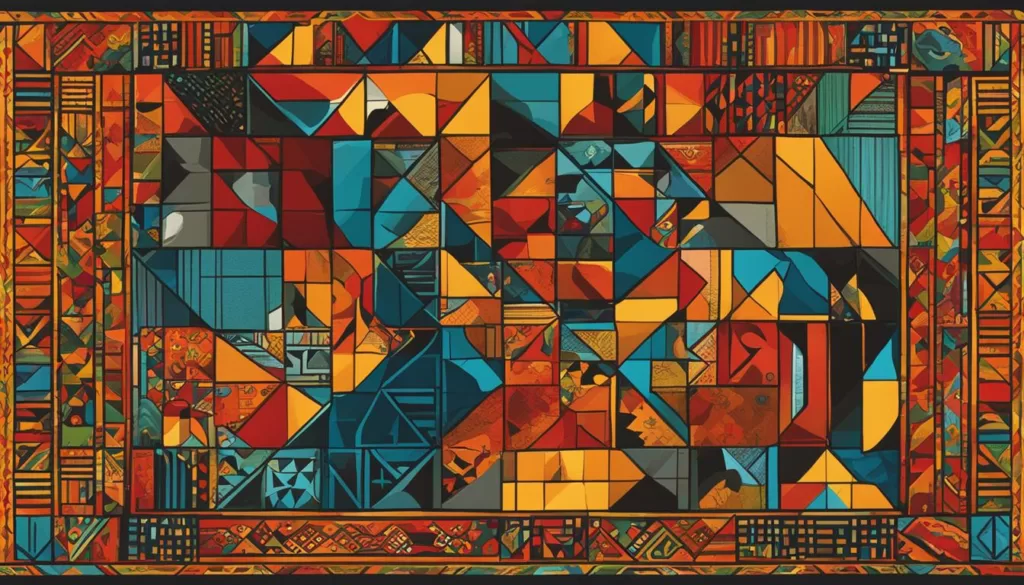
Understanding the Differences between Angolan Dialects
The linguistic landscape of Angola is marked by an array of dialects, each with its own distinct phonological and syntactical character. These Angolan dialects arise from a confluence of variables—geographic, historic, and ethnic—that bring forth an enchanting array of linguistic nuances. From the intricacies of Luvale spoken along Angola’s western border to the delicate cadences of Ndombe found in isolated communities, these variations exemplify the richness of Angola’s cultural mosaic.
Below is an exploration of Angola’s key national languages, highlighting where they are primarily spoken and the significant communities of speakers they boast:
| Language | Primary Regions of Use | Speaker Community Size |
|---|---|---|
| Umbundu | Central and Southern Angola | Over 6 million |
| Kimbundu | Luanda and Nearby Provinces | Approximately 4 million |
| Kikongo | Northwestern Angola, Including Cabinda | Around 2 million |
The enchanting world of Angola’s languages — with its Umbundu, Kimbundu, and Kikongo — speaks volumes about the nation’s cultural dynamism. The resilience and beauty of these languages illustrate the very essence of Angola’s identity—a country moving forward while holding treasured threads of its past, secured in the heart of its speech.
The Role of Foreign and Asian Languages in Angola
The Angolan nation is a crossroads of cultures where an array of languages intermingle. Amidst the prevailing Portuguese language and the diverse endemic Bantu languages, there lies a rich vein of Asian languages in Angola that represent its historical and ongoing interactions with distant lands.
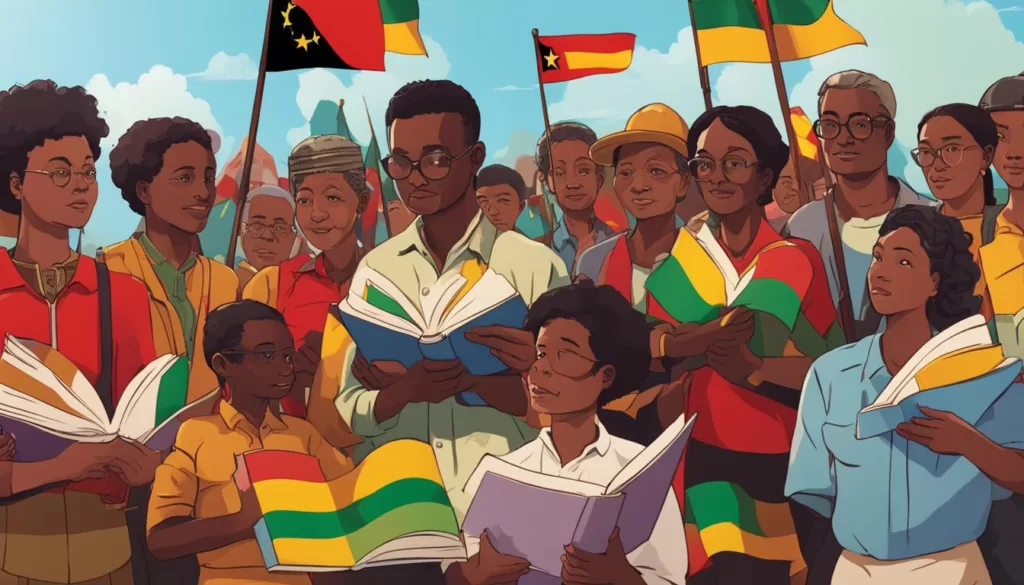
The linguistic diversity in Angola further extends to the growing importance of globally influential languages within the Angolan education system, most notably English and French. This inclusion marks the nation’s rising participation in global affairs and acknowledges these languages’ crucial role as a means of international discourse.
Angola’s Multilingual Nature: From Arabic to Chinese
In pockets of Angola’s social tapestry, especially within the spheres of trade and enterprise, foreign languages in Angola such as Arabic and Chinese resonate. For instance, the Arab-speaking community, primarily of Lebanese descent, and the sinophone population manifest the nation’s business and cultural liaisons, underscoring the extent of Angolan multilingualism.
The Education System and the Introduction of English and French
With an eye on the future, the Angolan education system is increasingly embracing the learning of English in Angola, moving towards making it a compulsory subject, thereby charting a course for integration into an interconnected global community. Simultaneously, the geographical enclaves like Cabinda, nestled between Francophone nations, maintain the significance of French in Angola through elective instruction and day-to-day communication. This strategic linguistic elevation mirrors the Angolan acknowledgment of the diplomatic and commercial heft carried by these foreign languages.
Conclusion
The linguistic portrait of Angola paints a vivid picture of a nation as diverse in speech as it is in heritage. At the heart of its communicative expression is Portuguese, the official language that serves as a connecting fiber for the people of Angola. It’s a language that permeates every aspect of Angolan life, from government to media, education to everyday conversation. Yet, the cultural heritage of Angola is also vividly expressed through its wealth of indigenous tongues – a testament to the nation’s rich and complex tapestry of ethnic identities. In the urban centers and rural outposts, languages like Umbundu, Kimbundu, and Kikongo are spoken with pride and are intrinsic to Angola’s national identity.
This multilingual Angola, with its harmonious cacophony of indigenous and colonial languages, stands as a testament to the country’s resilience. It demonstrates how Angola has managed to preserve the integrity of its linguistic diversity while also embracing the utility of foreign languages like English and French. The strategic implementation of these global languages in Angola’s education system underscores not only adaptability but also a forward-thinking vision that acknowledges the power of language in the global arena.
As we reflect on the languages spoken in Angola, it’s clear that the nation’s linguistic diversity is more than a mere footnote in its history – it is a vibrant, living chronicle of its cultural ethos. Angolans’ commitment to nurturing their linguistic heritage while remaining receptive to global influences showcases a national identity that is both firmly anchored in its past and agilely sailing towards a promising future. In this way, the story of Angola’s languages is an inspiring narrative of cultural persistence, evolution, and inclusive growth.
FAQ
What languages are spoken in Angola?
Angola is a multilingual country with Portuguese as its official language. Alongside Portuguese, there are 46 other recognized languages in the country, many of which are from the Bantu language family. These include, but are not limited to, Umbundu, Kimbundu, and Kikongo. There’s also a presence of European languages like English and French, and Asian languages such as Arabic and Chinese due to immigration.
Why is Portuguese the official language of Angola?
Portuguese became the official language of Angola during the colonial period when Angola was a colony of Portugal. Following independence, Portuguese remained the sole official language and is used across all facets of Angolan society, including government, education, and media. It acts as a lingua franca, uniting the ethnically and linguistically diverse nation.
How does the language diversity in Angola differ between urban and rural areas?
Language diversity in Angola exhibits a clear urban-rural divide. In urban areas, Portuguese is predominantly spoken, with around 85% of city dwellers using it at home, while rural areas exhibit a much more diverse linguistic environment with a stronger presence of indigenous languages. This is because urbanization and historical events like the Civil War have influenced migration patterns and linguistic practices.
What are the key Bantu languages spoken in Angola?
The most prominent Bantu languages spoken in Angola are Umbundu, Kimbundu, and Kikongo. Umbundu is predominantly spoken in the central and southern parts of Angola. Kimbundu is prevalent in the northwestern parts, including the capital, Luanda, while Kikongo is mainly used in the northwestern region bordering the Democratic Republic of Congo.
What is the cultural significance of Angolan dialects and tribal tongues?
Angolan dialects and tribal tongues are integral to the country’s cultural identity. They are carriers of tradition and encapsulate the histories, relationships, and worldviews of the various tribes in Angola. These languages and dialects play a crucial role in maintaining the rich cultural heritage and diversity of Angolan society.
How has Portuguese influenced society in Angola?
Portuguese has had a profound influence on Angolan society, serving as the primary language of communication in education, administration, and media. Since its introduction during colonial times, it has become the mother tongue for a substantial portion of the population, fostering national cohesion among the country’s diverse ethnic groups.
What is the role of Bantu languages in Angola beyond their everyday use?
Beyond daily communication, Bantu languages in Angola have significant cultural and historical roles. They have given rise to rich bodies of oral and written literature and are a focal point of identity for many ethnic groups. The Angolan government officially recognizes some Bantu languages, which ensures their development and preservation.
Are there any variations within the Angolan dialects?
Yes, there are numerous dialectical variations within Angola. The country’s complex history, geography, and ethnicity contribute to a diverse linguistic landscape, with each region and ethnic group having unique linguistic characteristics and dialects.
What foreign and Asian languages are spoken in Angola, and why?
Alongside African and European languages, there are Asian languages spoken in Angola, primarily by immigrant communities. These include Arabic and Chinese, representing the languages of Lebanese and Chinese residents respectively. Their presence reflects Angola’s commercial and cultural exchanges with the Middle East and Asia.
How does the Angolan education system incorporate languages like English and French?
English has become an increasingly important part of the Angolan education system and is taught as a mandatory subject in many schools, reflecting a strategic move towards greater international engagement. French, while not mandatory, is widely spoken and taught, especially in the Cabinda province due to its proximity to francophone regions.
